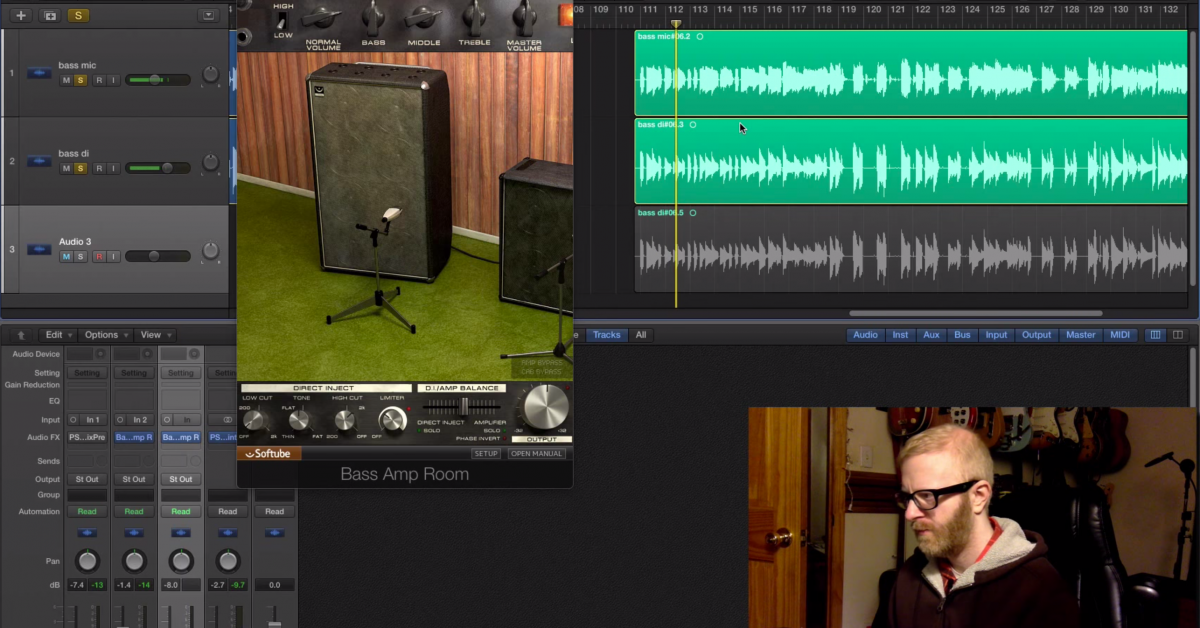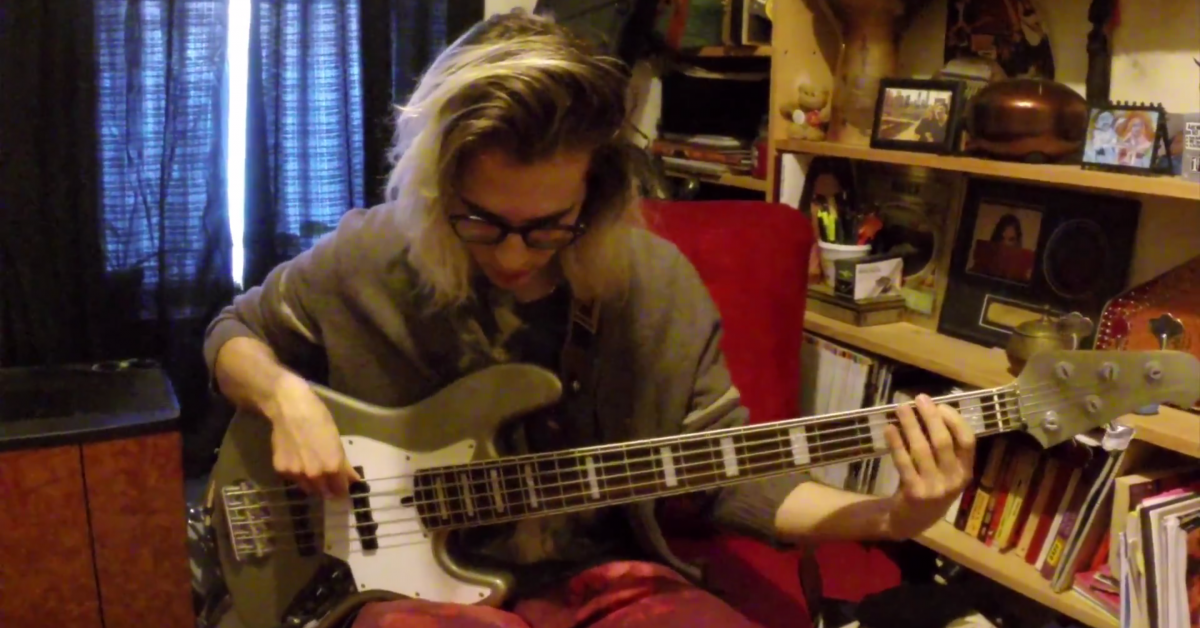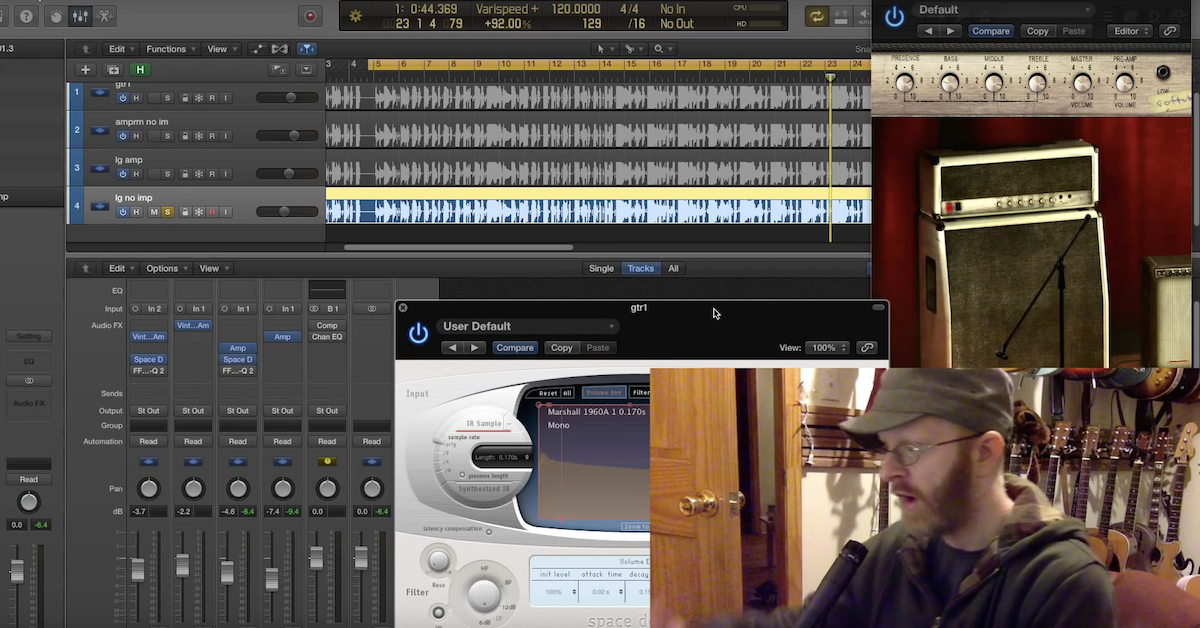Softube Bass Amp Room Plugin Review
This is a bass amp simulation plug-in. It’s a really good one at that. I’m going to run you through some of the features and give you a few examples, so you can get a feel for what this might sound like if you use it.
Now, there’s a couple things I want to talk about with this plug-in. In the preamp section of the bass amp, which would be a tube head if you had a bass amp with you, the head and the cab, the head is based on a DR103 hi-watt head from probably it’s the early 70’s. I believe they chose this particular head, which is originally a guitar head, because you could get it to breakup and get kind of this really nasty kind of “Who” or tube overdriven sound if you really want it.
They give us a couple of different cabs to choose from that we’re going to pair with this head. You only get one head, so it’s not like you can swap those out with say, an SVT head or something, it’s just the one. The DR103, and from there, we can switch cabs, but that’s going to give us a lot of flexibility.
We have three cabs, we have the Ampeg 8×10. Classic SVT cab. We have a 4×12 closed back cabinet, and we have a 1×12. I’m not sure if that’s supposed to be an open or closed back cabinet, but clearly we have a variety of sound there.
On the bottom of this plug-in, we have the option to use a DI signal, and we can blend the mic amp feed with the DI signal, and we have some adjustments, which I’ll get to on the DI feed that allow us to sculpt the tone a little bit more.
Let’s start at the top with the bass head.
I’m going to just play something that I had recorded previously with this preset, which is “crunchy big 70’s.”
[bass guitar]
I didn’t really mess with this sound at all.
You can notice, if we look down here, we’re going to see that I have the DI amplifier at about the middle. Before I even mess with anything, I just want to point out one of my favorite things about this plug-in, and that’s this phase invert switch here, which makes a big difference. So let’s listen.
[bass plays, phase flipped]
That drastically changed the sound.
You can really use this to your advantage to tailor your tone a little bit. For this particular line, I happen to like the phase invert switch on.
Let’s go back up top here. We have the option for high or low input. Let’s hear how that changes the sound.
[bass guitar plays, switching between high and low input]
It drives the head a little bit harder when you have it on high input. As far as the controls go, they’re pretty simple. The normal volume, which will act as a preamp gain. Bass, middle, treble, and master volume that controls the overall output of the head.
I’m going to go down here where we have this DI amp balance, and we’re going to turn it all the way over to the amplifier now, because I want to talk about moving this microphone around the cabinet.
Let’s listen to it.
[bass guitar, moving microphone]
Now, I can grab this mic and I can move it closer or further away. I can also move it sideways.
Let’s switch through these three cabs right now, and give you an idea of what they do.
[bass, switching between cabs]
Let’s talk about this DI signal now. We’re going to go back down here where there’s this DI amp balance, and I’m going to push it all the way over to DI, because I want to hear what this DI signal sounds like. Let’s listen.
[bass DI plays]
The limiter is set in the middle right now.
[adjusting limiter settings]
Let’s turn the limiter all the way up.
It’s a pretty transparent compression, which is nice.
Let’s try the low-cut.
[adjusts low-cut]
Let’s try the high-cut.
[adjusts high-cut]
Mess with the tone.
[adjusts the tone]
I suppose my only criticism so far about this plug-in would be that I wish you could send the DI and the amp signal out to two different channels. I suppose you could do that if you just copied the same audio file to two different tracks and had two instances of the plug-in, but it would be nice just to be able to route those just because I might want to compress them differently or just have more options for EQ and maybe even add in FX separately, but you can’t because it sums then inside the plug-in, but that’s a pretty small critique.
Let’s hear what happens when we mess around with the balance a little bit.
[bass plays, adjusting balance]
I want to talk about the option in the amp room to turn off the cab simulation. Now, when I use the vintage amp room, which is Softubes plug-in for guitar amp emulation, I don’t generally like turning the cab emulation off unless I’m going to use some other impulse response to mimic a cabinet, but as far as the bass amp room goes, it kind of sounds cool if you turn it off sometimes.
[bass guitar]
I have it fed all the way to the amp side right now.
I’m going to turn the cab back on.
[bass plays, amp on]
So, as you can see, this plug-in offers a lot of variables that you wouldn’t even notice just by first pulling up the plug-in. So I think they’ve done a nice job of making it look pretty simple. Within the simplicity is a whole lot of complexity that you can really refine your sound with.

![Softube Bass Amp Room Plugin [Review]](https://i.ytimg.com/vi_webp/tx_k7Dfij-o/hqdefault.webp)



